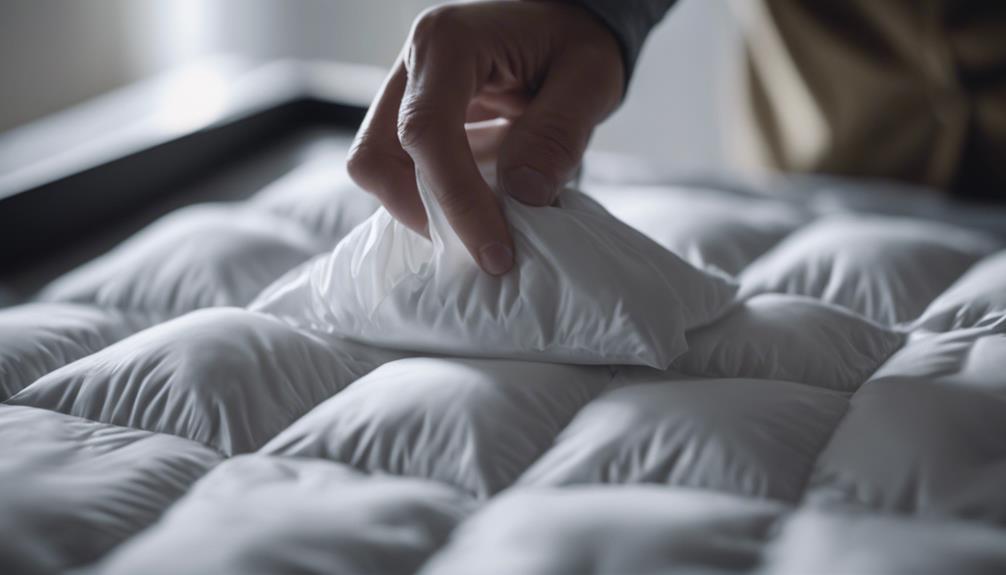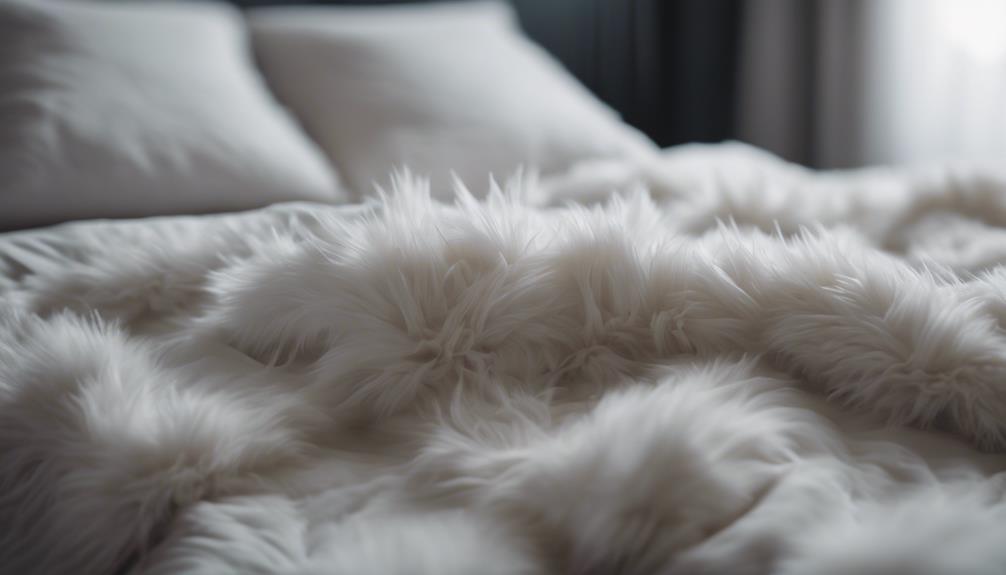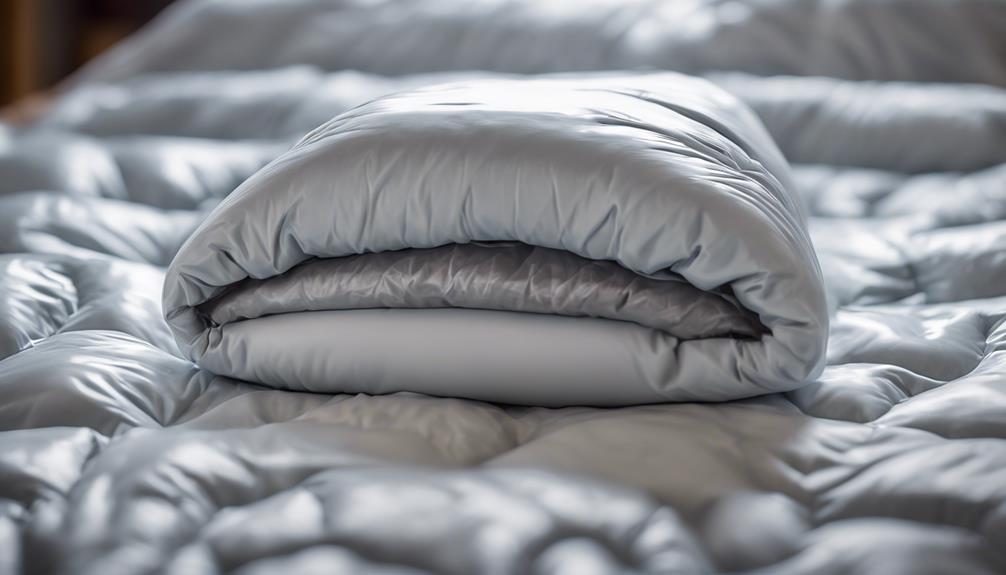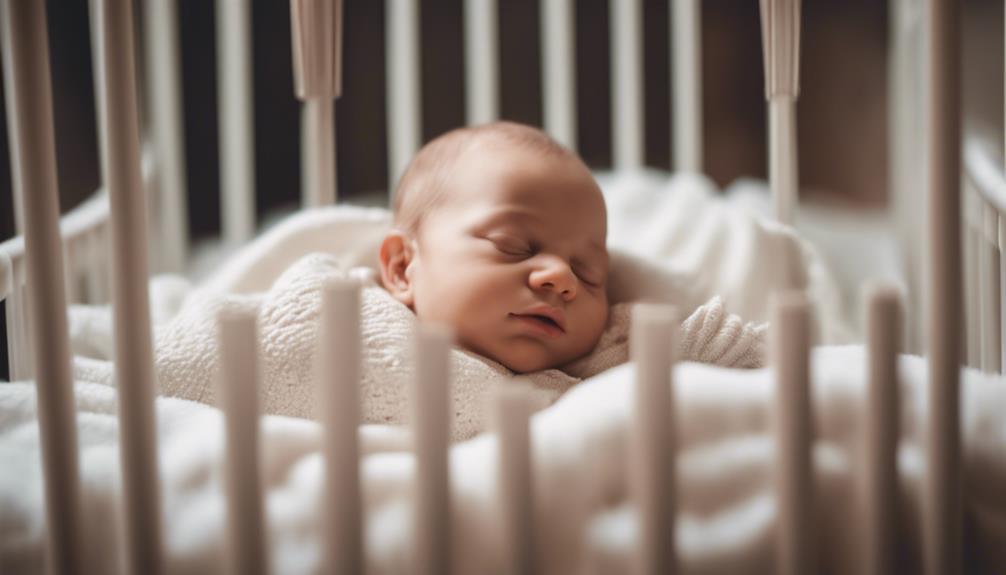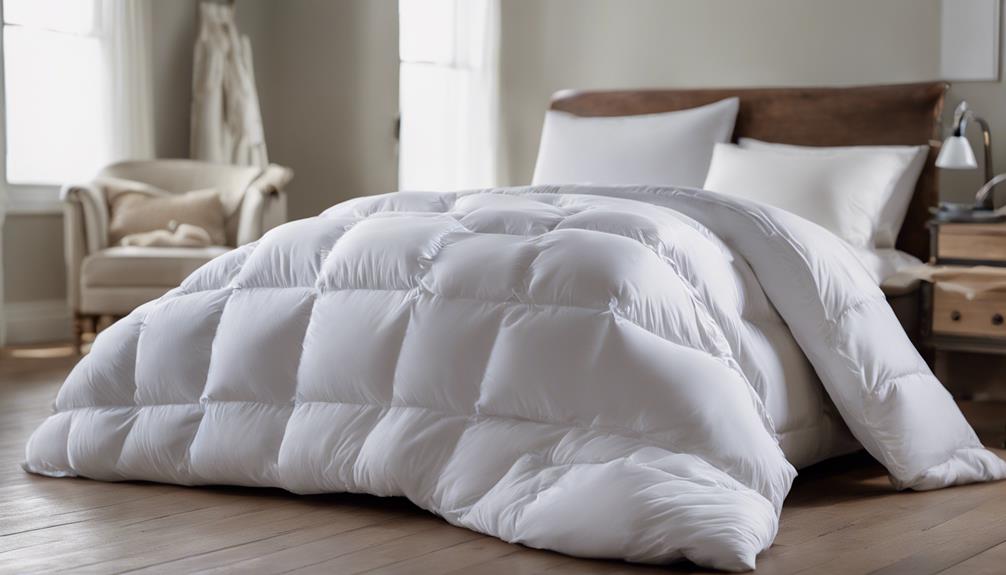Yes, you can acquire bed bugs from a new comforter. Indications include small reddish-brown bugs, bloodstains, and fecal spots. Check seams and crevices for live bed bugs, eggshells, or molt skins. To avoid infestations, carefully inspect new bedding, wash with high heat, and use bed bug-proof encasements. Launder new comforters in hot water and dry on high heat to eradicate bed bugs. For severe cases, consider seeking professional help. I encourage you to stay educated on bed bug prevention and treatment methods for a comfortable, bug-free environment.
Key Takeaways
- Bed bugs can be found in new comforters if the bedding is contaminated during manufacturing or storage.
- Inspect new comforters for signs of bed bugs like live bugs, fecal spots, and eggshells before use.
- Washing new comforters in hot water and using high heat drying can help eliminate bed bugs.
- Employing bed bug-proof encasements on mattresses and regular maintenance can prevent infestations.
- Seek professional help if bed bugs are suspected in new bedding to ensure effective treatment.
Signs of Bed Bugs in New Comforters
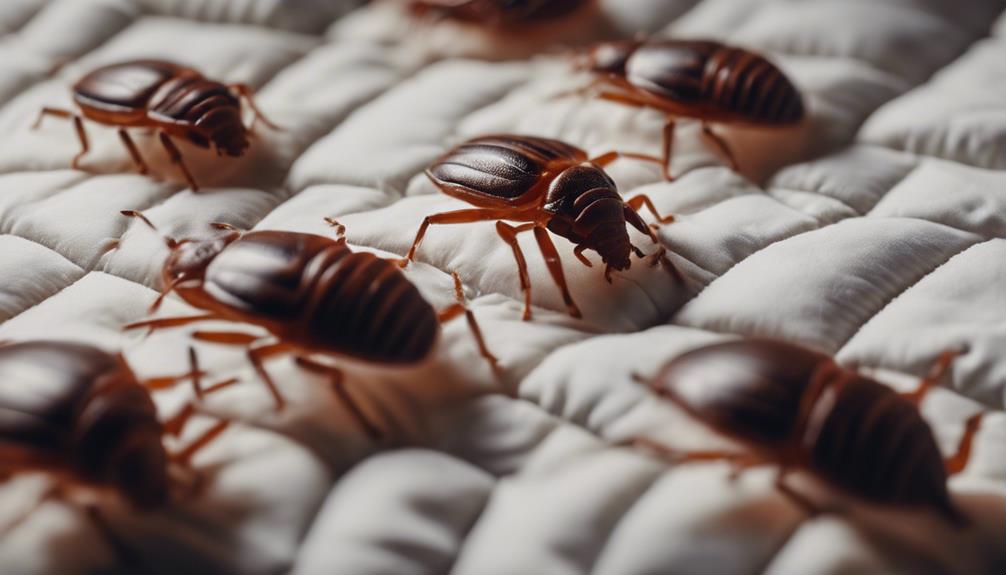
When inspecting new comforters for signs of bed bugs, vigilance is essential to guarantee infestations in our homes. Bed bugs can sneak into new comforters during the manufacturing or storage process, leading to potential infestations. Keep an eye out for small red or brown bugs, bloodstains, and fecal spots as common indicators of a bed bug presence.
Additionally, ivory-colored eggshells on the fabric could signify a bed bug infestation brewing within the comforter. Live bed bugs visible on the new comforter after unpacking are a clear sign that immediate action is necessary to address the situation.
Thoroughly checking new comforters for any signs of bed bugs before use is vital in safeguarding your home against these pesky pests. By being proactive and observant, we can nip potential infestations in the bud and make certain our living spaces remain bed bug-free.
Inspection Tips for New Bedding
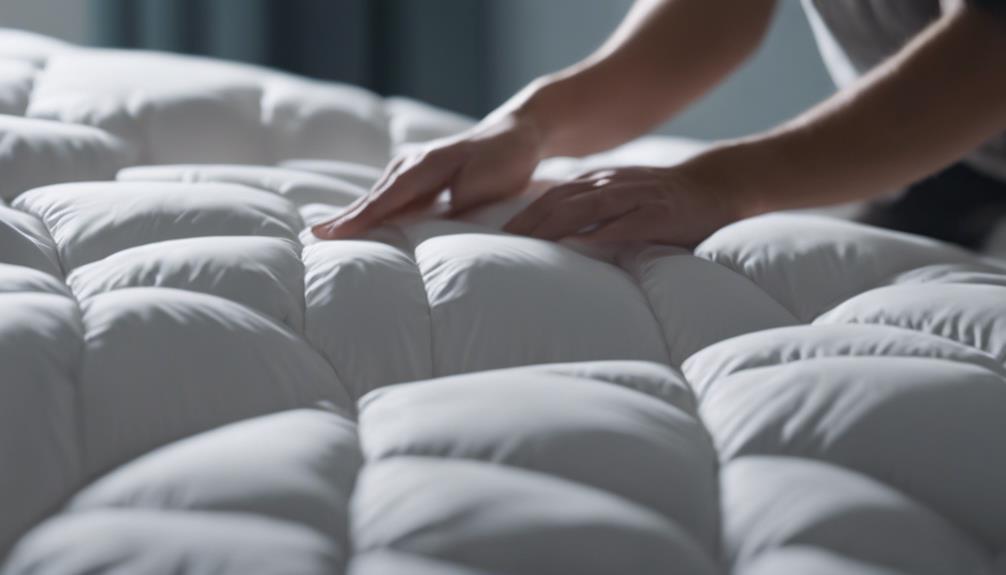
In order to create a bed bug-free environment, thoroughly inspecting new bedding for any signs of these pests is essential. When examining new bedding, it is important to be vigilant for any indicators of bed bugs. Below are some essential inspection tips to help you detect signs of bed bugs and make sure your bedding is free from infestations:
| Inspection Tips | Description |
|---|---|
| Look for small insects | Check for small reddish-brown bugs crawling on the fabric or hiding in seams and folds. |
| Inspect for fecal spots | Dark fecal spots may indicate bed bug activity; closely examine the bedding for these signs. |
| Check seams and crevices | Bed bugs often hide in seams, folds, and crevices; inspect these areas thoroughly for any bugs or eggs. |
| Search for molt skins | Shed skins from growing bed bugs can be a sign of infestation; look for these on the bedding surface. |
| Consider professional help | If you find any signs of bed bugs, contact a pest control professional for further inspection and treatment. |
Preventing Bed Bug Infestations
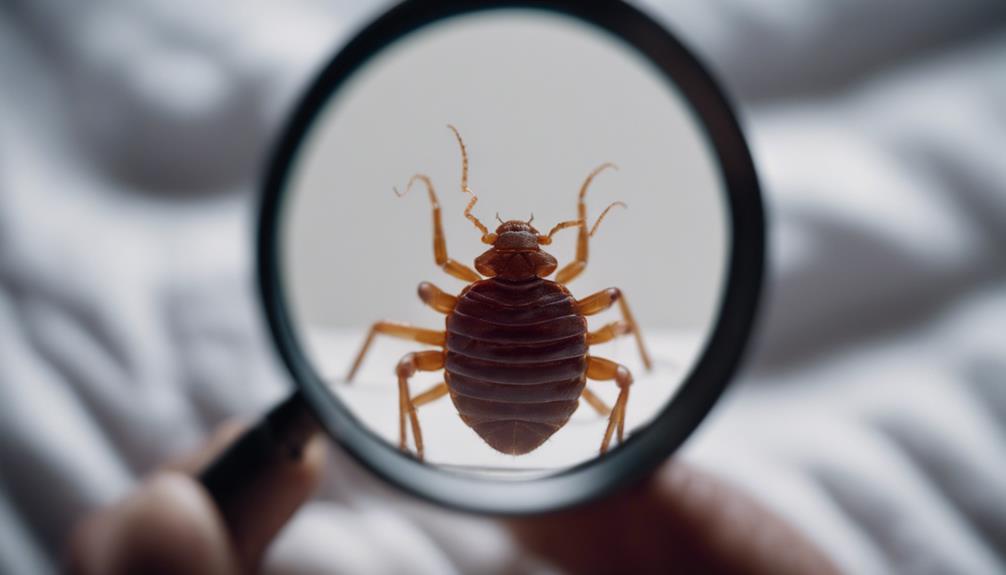
To safeguard against bed bug infestations, it's imperative to proactively implement preventive measures. Here are some steps you can take to prevent bed bugs from infesting your new comforter:
- Inspect Your New Comforter: Before bringing it into your home, carefully examine the new comforter for any telltale signs of bed bugs such as fecal spots, eggs, or live bugs.
- Wash with High Heat: Launder your new comforter in hot water and then dry it on high heat. This process helps kill any potential bed bugs that may be present.
- Use Bed Bug-Proof Encasements: Consider using bed bug-proof encasements on your new comforter to create a barrier that prevents infestations and protects against future bed bug issues.
- Regular Maintenance: Implement regular inspections of your bed bug mattress and bedding, along with maintaining cleanliness in your sleeping area to deter bed bugs from making a home in your new comforter.
Washing New Comforters for Bed Bugs
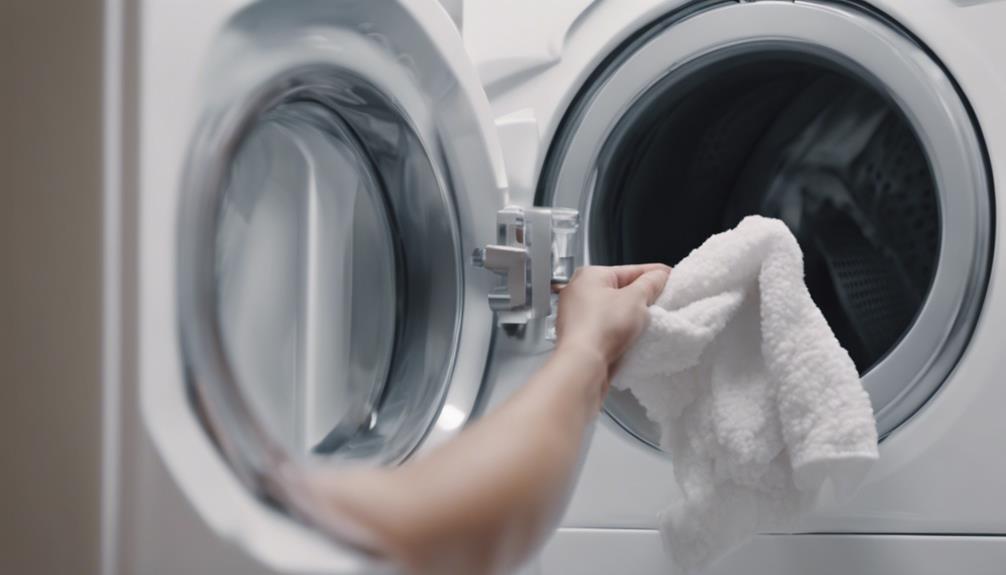
We recommend thoroughly inspecting new comforters for any signs of bed bugs before use to prevent potential infestations. Bed bugs bite, leaving behind itchy red marks on the skin, so it's important to make sure your new comforter is free from these pests.
Washing a new comforter in hot water can help eliminate any bed bugs that might've hitchhiked their way into your home. Let the bed bugs meet their demise in the heat of the washing machine. Additionally, using a clothes dryer on high heat settings after washing can kill any remaining bed bugs or eggs, providing an extra layer of protection.
Eliminating Bed Bugs in New Bedding
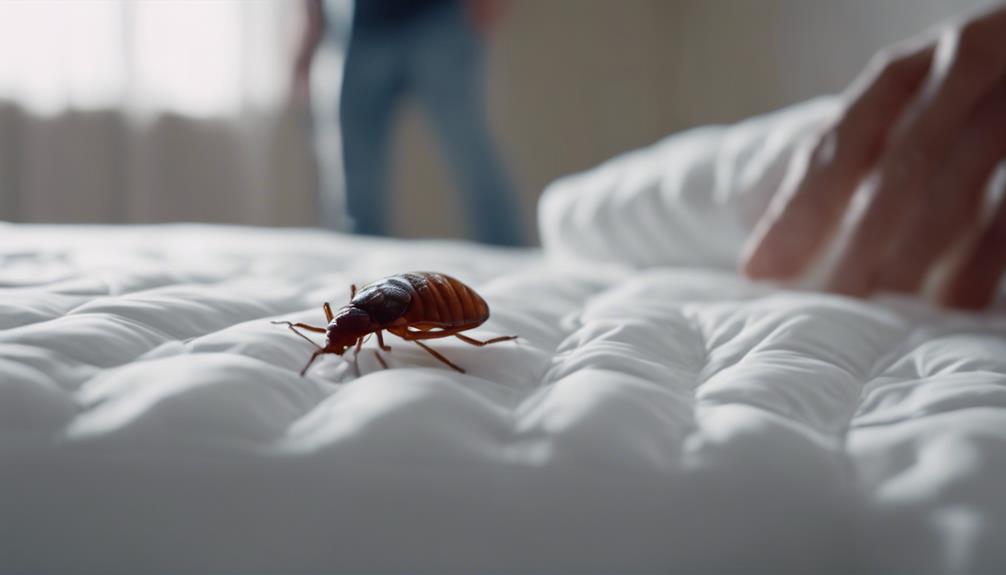
When dealing with potential bed bug infestations in new bedding, it's essential to take proactive measures to prevent their spread.
Inspecting new comforters thoroughly for any signs of bed bugs before use is key.
Using high heat to wash and dry new bedding can help eliminate any bed bugs that may be present, along with employing mattress encasements and bed bug-proof covers for added protection.
Bed Bug Prevention Tips
Examining new comforters for signs of bed bugs is essential in preventing infestations and ensuring a comfortable night's sleep. To keep your bedding free from bed bugs, follow these prevention tips:
- Inspect Thoroughly: Check for small reddish-brown bugs, bloodstains, or dark fecal spots on new comforters.
- Wash and Dry: Launder new comforters in hot water and dry them on high heat to eliminate any potential bed bugs or eggs.
- Use Bed Bug-Proof Covers: Cover new comforters with bed bug-proof encasements to prevent infestations and protect against future bed bug issues.
- Regular Maintenance: Maintain cleanliness by regularly inspecting and cleaning bedding to keep new comforters free from bed bugs.
Inspection and Treatment Methods
Upon receiving a new comforter, it's essential to promptly inspect it for any signs of bed bugs to prevent potential infestations. Use a flashlight to check seams and crevices for brown or red stains, live bed bugs, fecal spots, or eggshells.
If bed bugs are detected, treat the new comforter by washing it in hot water and drying it on high heat to eliminate any infestations. Consider using a bed bug-proof encasement on the new comforter to prevent future infestations and protect against allergens.
In case the new comforter is heavily infested with bed bugs, seek professional pest control help to ensure thorough elimination. Regular inspection and treatment are essential in maintaining a bed bug-free environment.
Bed Bug Prevention Measures
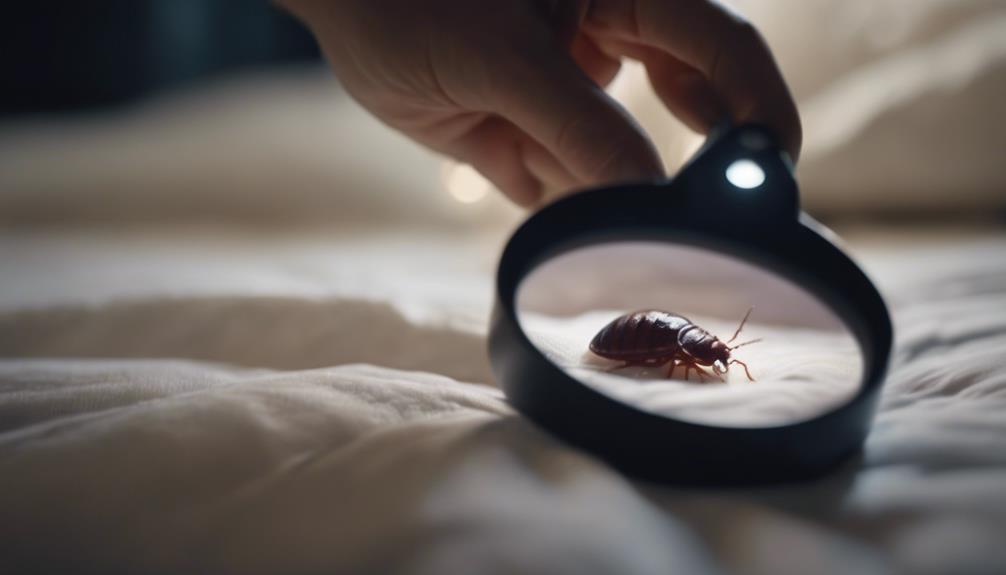
When it comes to preventing bed bugs from infesting new comforters, there are a few key measures to keep in mind.
Inspecting new comforters for any signs of bed bugs, such as fecal spots or blood stains, is essential.
Additionally, washing and drying new comforters on high heat can help eliminate any potential bed bugs or eggs that may be present.
Prevention Tips
To prevent bed bug infestations from new comforters, consider using bed bug-proof covers as a proactive measure.
When dealing with new bedding items, always check for any signs of bed bugs before bringing them into your home.
To further safeguard against these pests, make sure to wash new comforters in hot water and dry them on high heat to eliminate any potential bed bugs that may be present.
Additionally, store new comforters in sealed plastic bags until you're ready to use them to prevent any outside contamination.
Inspection Guide
When inspecting new comforters for potential bed bugs, carefully look for signs such as small reddish-brown insects or dark fecal spots. These indicators may also include blood smears, molt skins, eggs, or eggshells that suggest a bed bug presence. Additionally, be wary of musty odors or unpleasant smells that could accompany bed bug infestations in new comforters. It is essential to avoid bringing new comforters directly into living spaces without thorough inspection to prevent introducing bed bugs. Utilize preventive measures like washing new comforters in hot water or using a dryer on high heat to eliminate potential bed bugs. Remember, early detection and action are vital in preventing a full-blown infestation.
| Signs of Bed Bugs | Description | Prevention Tips |
|---|---|---|
| Small Insects | Reddish-brown bugs visible to the naked eye | Thoroughly inspect seams and folds |
| Dark Fecal Spots | Tiny dark spots often found on the fabric | Wash in hot water or use a dryer on high heat |
| Blood Smears | Red stains that may indicate bed bug feeding | Avoid placing new comforters directly on beds |
Frequently Asked Questions
Can Bed Bugs Come From New Bedding?
Yes, bed bugs can come from new bedding if they were introduced during manufacturing or storage. It's important to inspect new bedding for signs of bed bugs like live bugs, eggs, or fecal stains.
Washing bedding in hot water and using high heat for drying can help eliminate potential infestations. If unsure about cleanliness, consider using a bed bug-proof encasement as a preventive measure.
Always be vigilant when bringing new bedding into your home.
Can You Get Bed Bugs From a Comforter?
We can get bed bugs from a comforter if it's infested. Bed bugs are attracted to warmth and can hide in bedding.
It's important to inspect new comforters for signs of bed bugs, like dark spots or bugs themselves. Washing and drying on high heat can help kill any potential bed bugs.
If bed bugs are present, it's essential to address the issue promptly to prevent further spread.
How Did I Get Bed Bugs All of a Sudden?
We may have gotten bed bugs suddenly due to various factors like travel, second-hand furniture, or visiting infested places. Bed bugs are skilled hitchhikers, moving easily between locations on belongings.
To prevent infestations, inspect items and spaces for signs of bed bugs regularly. Promptly address any issues to avoid further spread. Seeking professional help can also aid in eradicating bed bugs effectively and preventing reinfestation.
Should I Throw Away My Pillows if I Have Bed Bugs?
When dealing with bed bugs in pillows, it's important to act promptly. Inspection is key; look for signs like reddish-brown stains or bugs themselves. If infestation is confirmed, professional treatment may be necessary.
Cleaning and treating pillows thoroughly can help eradicate bed bugs. If the infestation is severe, disposing of the pillows might be the best course of action to prevent further spread.
Proper care and attention are essential for a bug-free home.
Is it Possible for Bed Bugs to Transfer from a Comforter to a Person?
Yes, can comforters carry bed bugs. It is possible for bed bugs to transfer from a comforter to a person. Bed bugs can hide in the folds and seams of comforters and may transfer to a person when they come into contact with the infested bedding. Regular cleaning and inspection can help prevent this.
Conclusion
To summarize, while it's rare to get bed bugs from a new comforter, it's still important to be vigilant and inspect any new bedding for signs of infestation.
By following proper inspection techniques and taking preventative measures, you can guarantee a comfortable and bug-free sleeping environment. Remember to wash new comforters before use and seek professional help if bed bugs are found.
Stay safe and sleep soundly!
